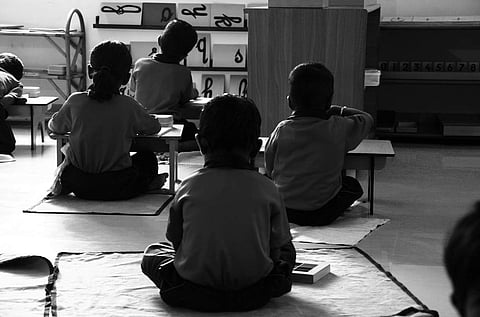

Picture yourself driving through your city and its just another day, with a lot of anticipation on what work will be like. Just as you drive up to a red signal, you look out the window and see someone who is genuinely in need of your help —you may give them something from a box of snacks that you have in your car or a note of Rs 10. But the case was different for Saraswathi Padmanabhan. One day, while driving around Bengaluru city, she spotted a few children of migrant communities at construction sites with no access to education and she knew that she should do something about it. That thought resulted in her and her husband building Diya Ghar, a Montessori for children of migrant laboureres.
It is very interesting how this idea of working with the migrant community came to Saraswathi. She explains, "In Bengaluru, there is so much of construction that happens on a daily basis and when I was going past this construction site I saw these kids between ages 2-6 playing around while their parents were labouring at work. It is a scary situation. Construction sites are not playing areas for these children. This phase of every child's life is where the emotional, physical and cognitive development takes place and they should be exposed to an ambience that stimulates development. Diya Ghar was founded to do exactly that. While brainstorming about how we could go about helping these children out I was reminded of the Montessori Methodology which brings out the best in every child and helps them discover themselves."
Was it easy setting up a school? How are the children? How did she find children? It just gets more interesting now. There are so many things to think about before setting up a school and when I flooded Saraswathi with all of the above questions she patiently answered them one at a time. "Setting up the school was not easy because we had no major source of funding. My husband and I invested in the school and our personal finances were what kept the school running. Much later, we had friends and a network of people who came in to sponsor a child," she said. The next step was to find children and staff. "Most of our staff joined us because they shared our vision and they come in with full power and are open to all the challenges we face in every season. Even if it means they have to learn a new language, they take up the challenge so that they can serve the children better," she explains. While in most cases children and parents reach out to schools for education, but for Diya Ghar, it was all different. Saraswathi explains how she got over 200 children to join her school in the past three years, "I have normally walked up to communities where I see a need and talked to them about the school. The responses come in varieties. Some parents are very happy to send their kids to school, as in most cases, they can't really afford school fee. On the other hand, some are very sceptical about it. In one case we had some parents offer us a hut nearby to teach the children there," she recalls.
With kids migrating from different parts of the country, language obviously is a concern. But Sarawasthi has a solution for that too. "We have two centres. While one centre caters to the needs of migrants from remote parts of Karnataka, the other caters to children who hail from Andhra and Telangana. We communicate with these kids in Kannada and Telugu and through that, we teach them English. The only disadvantage here is when we lose children because they have to yet again migrate to a different place. Although these children migrate to different places, the parents who earlier didn't plan on sending their children to school, have now seen the value of education and we believe will try their best to enroll their children in a school, where ever they go" she concludes.
